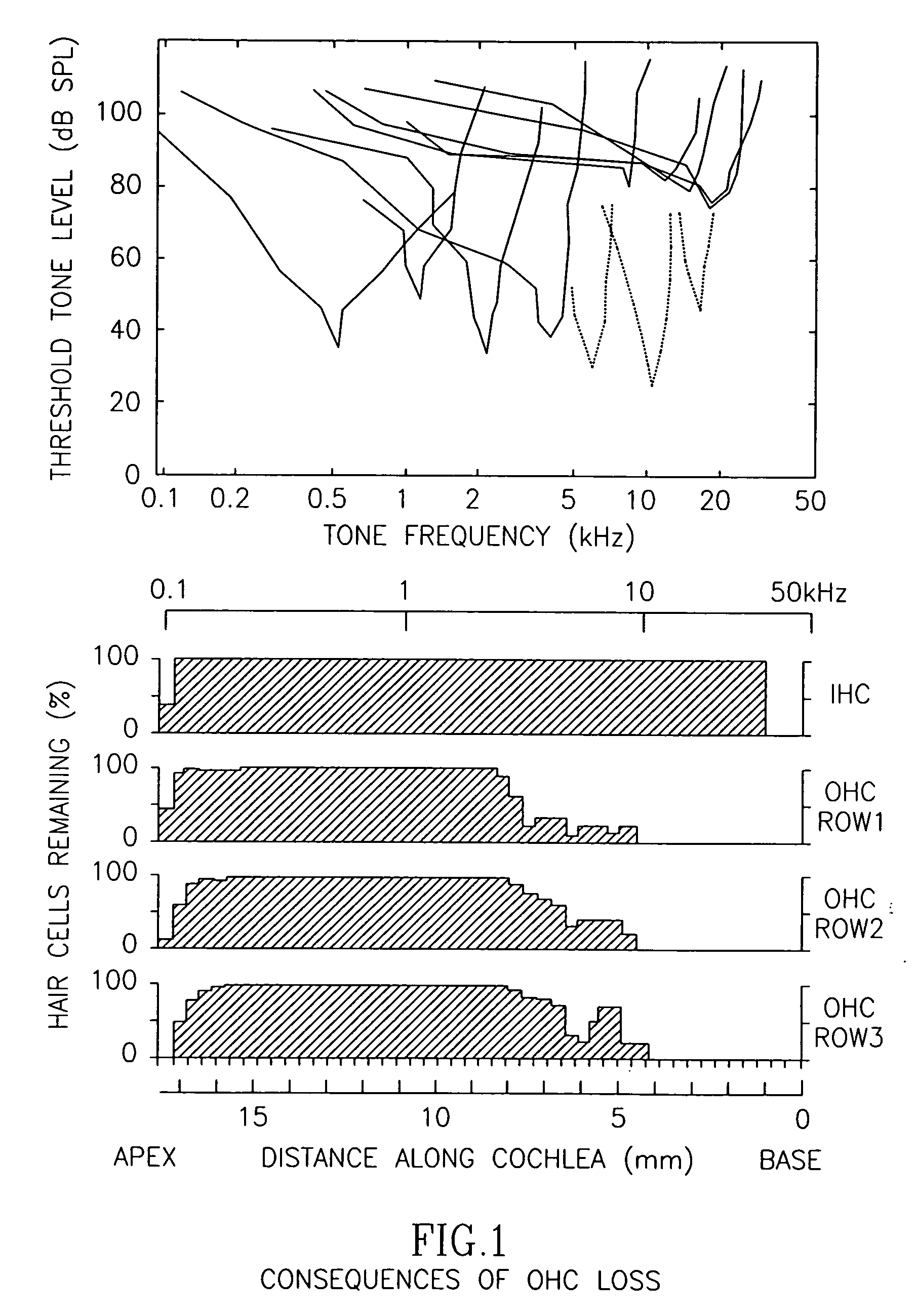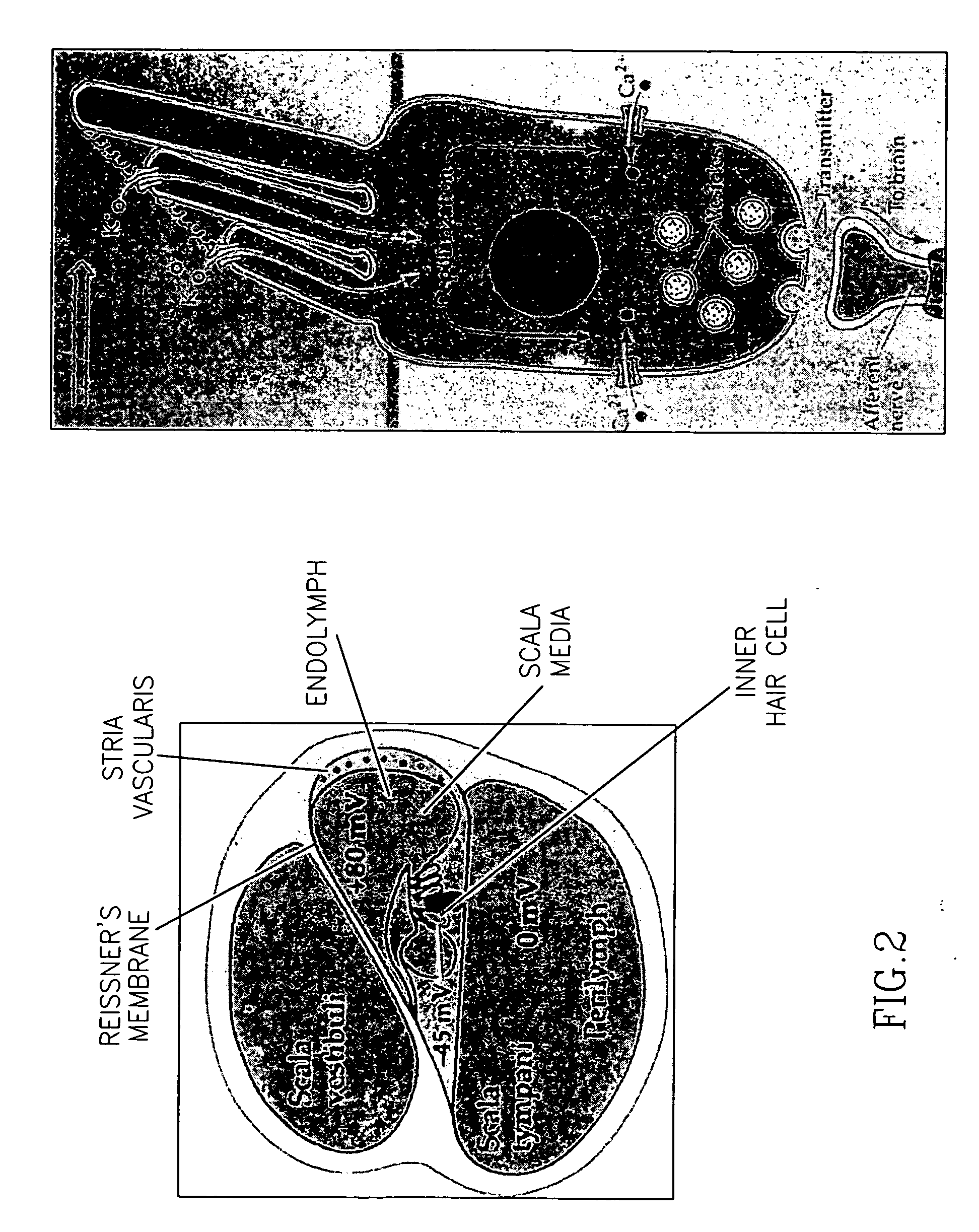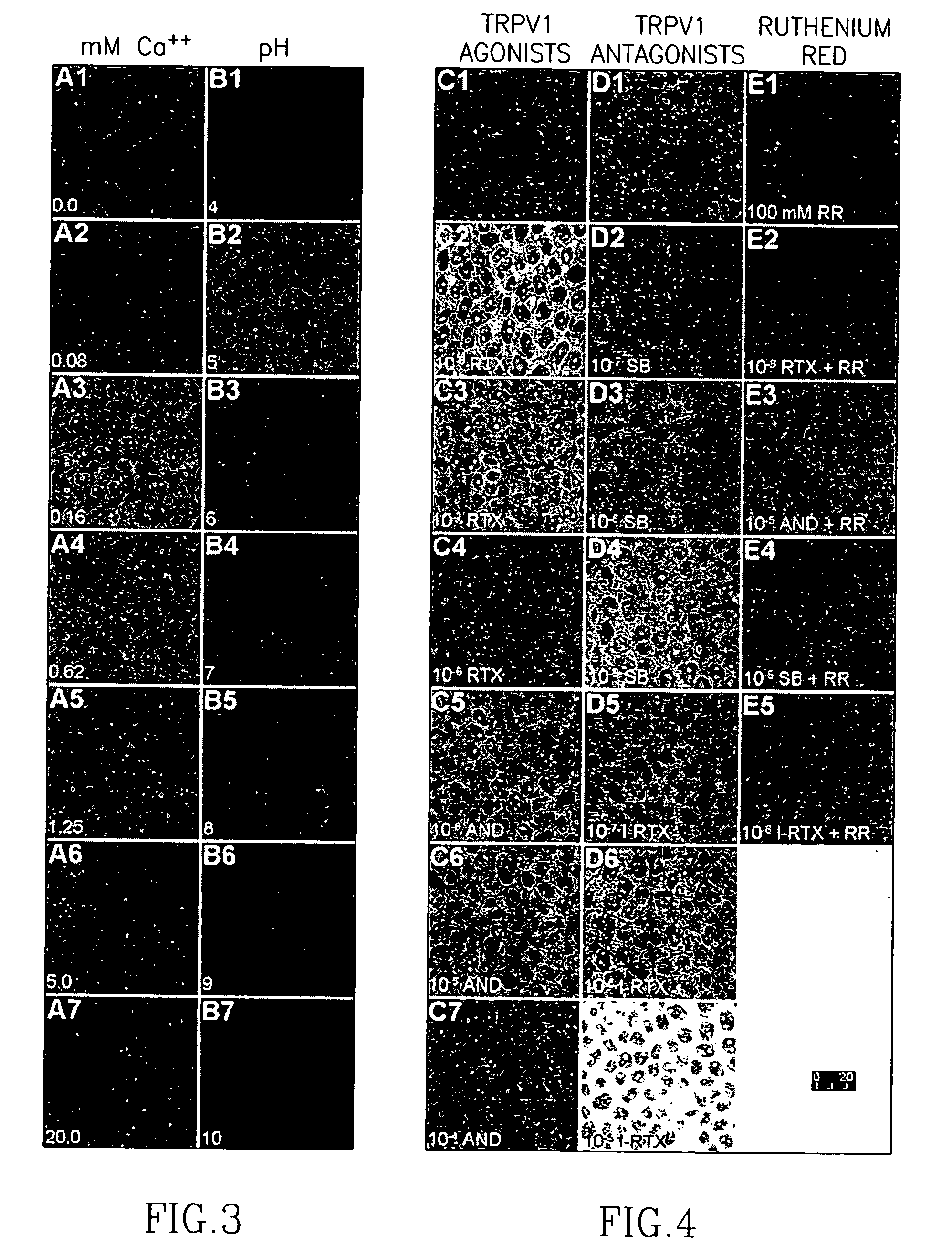Methods and compositions for the prevention of toxic side effects of aminoglycoside medications
a technology of aminoglycoside and toxic side effects, applied in the direction of heterocyclic compound active ingredients, biocide, animal husbandry, etc., can solve the problems of antibiotics with severe toxic effects, poor cytotoxicity characterization, kidney function, etc., to prevent the entry of aminoglycoside drugs, block uptake, and reduce or prevent the entry of drugs through cation channels
- Summary
- Abstract
- Description
- Claims
- Application Information
AI Technical Summary
Benefits of technology
Problems solved by technology
Method used
Image
Examples
example 1
TRPV1 Mediates Gentamycin Entry in Cultured Kidney Cells
[0090] According to this example, an endosome-independent mechanism by which gentamicin crosses the plasma membrane directly into the cytoplasm and then into intra-nuclear compartments was characterized and validated. The fluorescence of GTTR in these compartments was quenched by cellular lipids. The results also show that the vanilloid receptor, TRPV1, is involved in the uptake of Texas Red-labeled gentamicin into the kidney distal tubule cell line MDCK.
Regulation of GTTR Uptake:
[0091] MDCK cells were used as a model system to test regulation of GTTR uptake by conditions known to produce or modify a cation current through the TRPV1 channel. Conditions tested were varying extracellular calcium concentrations, pH, specific agonists, specific antagonists, and the non-specific cation channel blocker Ruthenium Red. In addition, we pre-mixed PIP2 with GTTR to determine whether that anionic phospholipid, known to bind gentamicin,...
example 2
In Vitro Analysis of Uptake of Gentamicin by Immortal Kidney Cell Line
[0106] Two cell types were used in these studies, an opossum kidney proximal tubule (OK) clone and a canine kidney distal tubule (MDCK) clone. The OK proximal tubule cell line was chosen because of the known clinical toxicity of aminoglycosides in the kidney proximal tubules (Fabrizii et al., 1997, Wien Klin Wochenschr. 109:830-5; Morin et al., 1984, Chemioterapia. 3:33-40), and the retention by OK cells of the PTH responsiveness characteristic of the kidney proximal tubule (Paraiso et al., 1995 B.B.A. 1266:143-147; Silverstein et al., 2000 Horm. Res. 54:38-43). The distal tubule cell line was used because, although far less subject to AG-induced cell death, the distal tubule is subject to numerous acute effects (H. S. Kang et al., 2000, Can J Physiol Pharmacol. 78:595-602; Kidwell et al., 1994, Eur J Pharmacol. 270:97-103; Quamme, 1986, Magnesium 5:248-72). Both were cloned from cultures that had been maintained...
example 4
In Vivo Protection from Ototoxicity Through Block of TRP Channels
[0123] Two groups of mice are administered a cocktail of gentamicin plus TRP channel blockers or gentamicin alone. Cochleae from mice given the TRP channel blockers harbor significantly greater numbers of surviving hair cells and show lower incidence of gentamicin-induced apoptosis or necrosis than those given gentamicin alone. Such data would demonstrate that TRP channel blockers can attenuate the ototoxic actions of gentamicin in the auditory system of the mouse, producing a preventative treatment for chemical-induced hearing disorders.
PUM
| Property | Measurement | Unit |
|---|---|---|
| pH | aaaaa | aaaaa |
| pH | aaaaa | aaaaa |
| excitation wavelengths | aaaaa | aaaaa |
Abstract
Description
Claims
Application Information
 Login to View More
Login to View More - R&D
- Intellectual Property
- Life Sciences
- Materials
- Tech Scout
- Unparalleled Data Quality
- Higher Quality Content
- 60% Fewer Hallucinations
Browse by: Latest US Patents, China's latest patents, Technical Efficacy Thesaurus, Application Domain, Technology Topic, Popular Technical Reports.
© 2025 PatSnap. All rights reserved.Legal|Privacy policy|Modern Slavery Act Transparency Statement|Sitemap|About US| Contact US: help@patsnap.com



